
The Ultimate Guide to Raising Poultry
By: Plain Direct
December 16th 2022, 12:00:00 am
Raising backyard poultry is a great way to control pests, reduce weeds, and save money with your own farm-fresh eggs. Different poultry birds have different benefits so you may be wondering which birds are best for you. Some farmers and homesteaders prefer one type of poultry while others reap the benefits of raising multiple varieties. Read on to learn all about raising chickens, guinea fowl, turkeys, and quail.
Behavior & Personality
Chickens
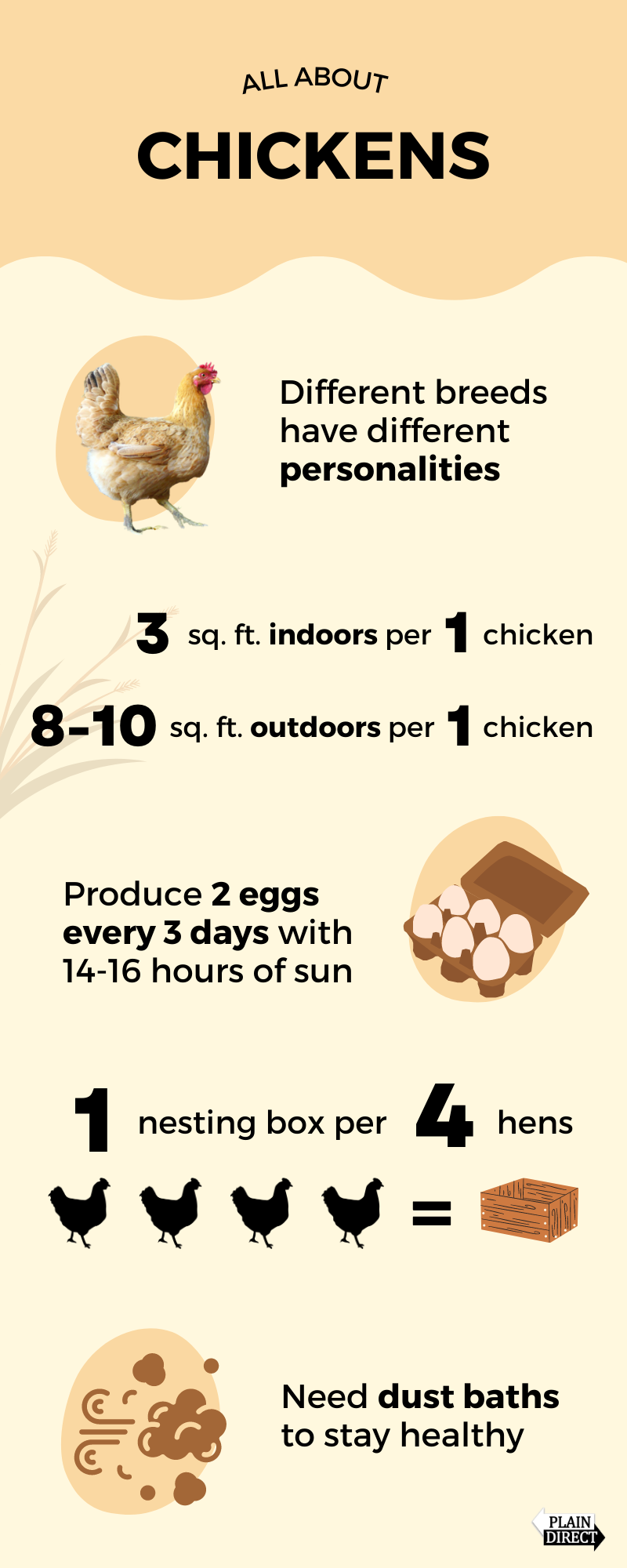
Chicken owners know that, like other animals, chickens have personalities. In fact, different chicken breeds have different types of personalities. Backyard chickens frequently become more than just a source of fresh eggs, many chickens become family pets. Also similar to other groups of animals, chickens have their own rankings known as their pecking order.
Guinea Fowl
Guinea fowl, also called guineas, are tough, strong birds. These birds can be noisy and will alert you to any intruders. Guineas are less domesticated than chickens but are much more independent and self-sufficient. Owners love how resilient and adaptable these birds are and frequently use them for pest control around their farms, gardens, and homes.
Turkeys
People who raise turkeys claim these birds are easier to raise than chickens, especially since turkeys don’t make a mess by digging and scratching. To the surprise of many people, turkeys actually have great personalities. These birds can easily become family pets with their lovable temperament and behavior.
Quail
Quail are considered to be wild game birds. Not all quail breeds are domesticated enough to be backyard birds but they are much quieter than chickens, ducks, and geese. Weighing around 5 ounces each, quail are an excellent choice for people who want to raise backyard poultry but don’t have a lot of space to do it. Plus, quail learn to recognize their owners and have been known to greet them!
Housing
Chickens
Space
You will need a spot that is big enough for a chicken coop while still adhering to local space regulations. Your chicken coop should be big enough to fit food, water, nesting boxes, and roosting space. For every 1 chicken, you’ll need around 3 square feet of indoor space and around 8-10 square feet of outdoor space. Giving your chickens plenty of space to run around will keep them healthy and free from an overcrowded, stressful environment.
Free-Roaming
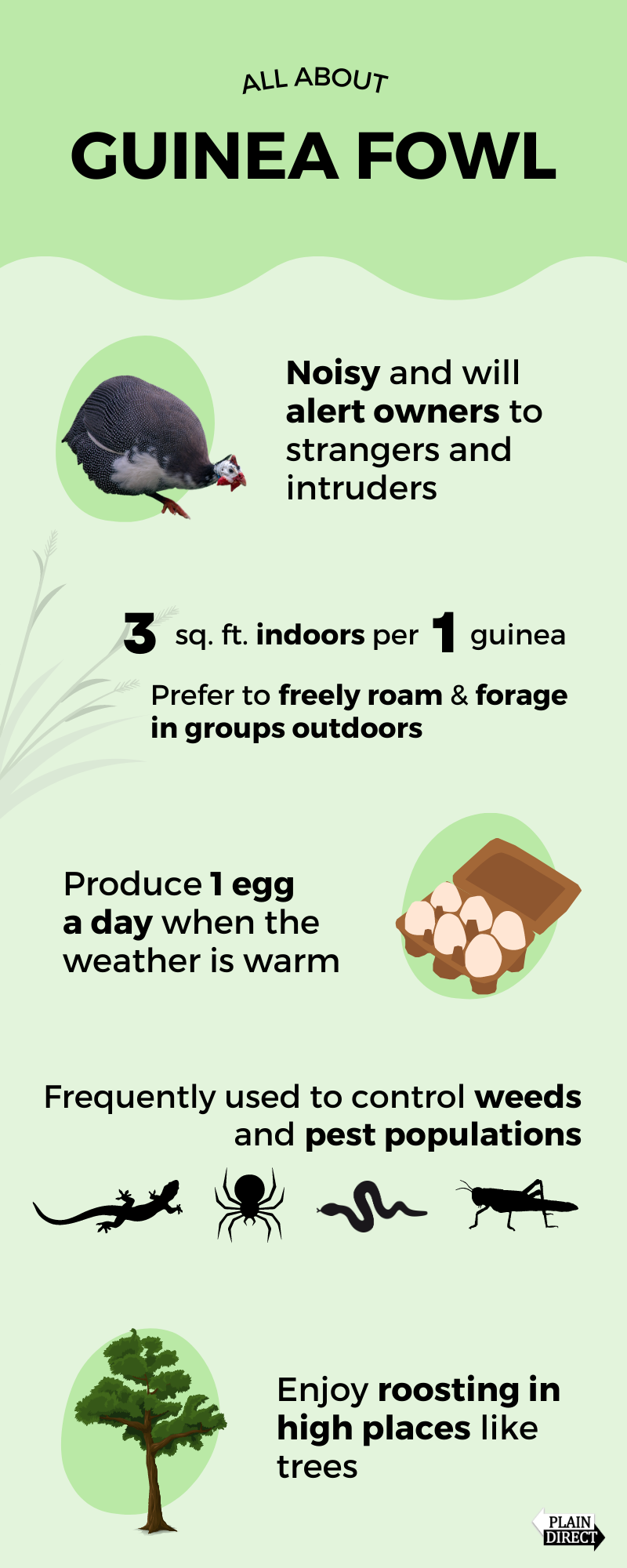
It’s recommended that chickens have a fenced-in area where they can freely roam during the day without the threat of predators or the ability to escape. This area should be fully enclosed including the roof. Attaching an enclosed chicken run to your coop gives your chickens the freedom to roam as they please, forage for food, and get the sunlight they need to stay healthy and lay eggs. While your chickens can freely use the chicken run during the day, you should keep them inside their coop at night to keep them safe.
Furnishings
Chicken coops should be fully enclosed and outfitted with roosts, perches, and 1 nesting box for every 4 chickens. Wood shavings are commonly used for chicken bedding as it’s easily accessible and affordable. To keep your chickens safe when indoors, choose a coop that closes securely with a lock at night.
Guinea Fowl
Space
Guineas should have around 3 square feet per bird so they can live comfortably in an environment that is not stressful and crowded. Guineas are not fans of being enclosed in a space so if they live in an enclosure there should be plenty of space for them to move around without being crowded. Owners should be aware that guineas can fly and, if
given a confined space to roam, will need the space to be fully enclosed.
Free-Roaming
Guinea fowl really enjoy the freedom to roam and hunt as a group. Even though they are self-sufficient, these birds need to be sheltered at night to keep them safe from predators. You can persuade guineas with food to take shelter inside at night. While guineas that are not free-roaming can have their wings clipped, free-roaming guineas shouldn’t have their flying ability taken away or they won’t be able to escape predators.
Furnishings
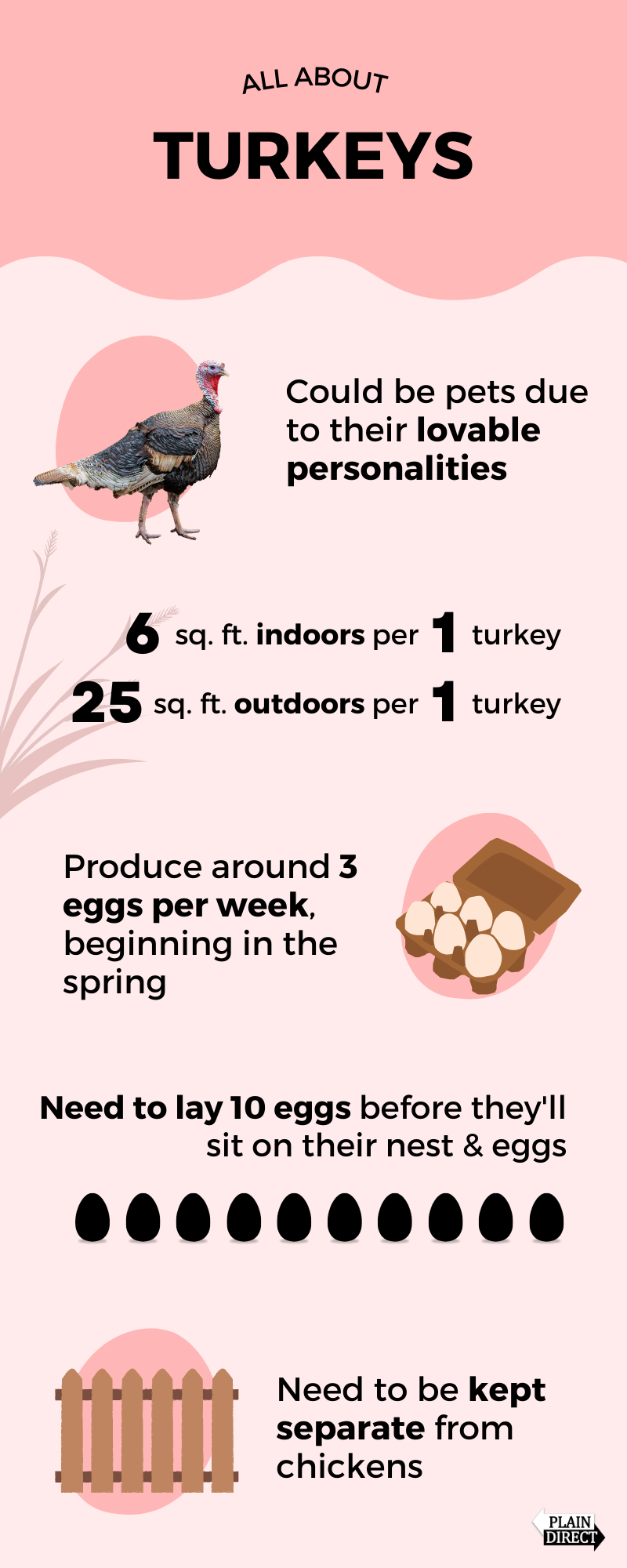
Bedding should be an absorbent material such as straw, hay, or wood shavings. Guineas love to roost and you’ll frequently find them hanging out in trees. A guinea’s perfect coop and shelter will be one with roosts that are high off the ground.
Turkeys
Space
Turkeys are large birds, needing at least 6 square feet per bird when indoors.
From the time they hatch to the time they are 8 weeks old, poults need a brooder space that is at least 1 square foot per bird.
Free-Roaming
Like other home and farm-raised birds, Turkeys should not be left out at night. Even if you let your turkeys roam during the day, they still need to be brought indoors at night. If you neglect to bring your turkeys indoors after dark, they can fall victim to attacks by predators and diseases.
Furnishings
Wood shavings are the ideal bedding material for turkeys. You should avoid using sawdust and newspaper as
bedding because they may try to eat sawdust instead of their food and die of starvation. Likewise, newspaper should not be used as bedding for turkeys because the material can give them splayed legs.
Quail
Space
Quail are considerably smaller than chickens and take up less space, needing no less than 1 square foot of space per bird. Additionally, you should give your quail around an inch and a half of space per bird at their water bins and feeders since these birds can be territorial. Because of their size, quail can actually be kept indoors as pets.
Free-Roaming
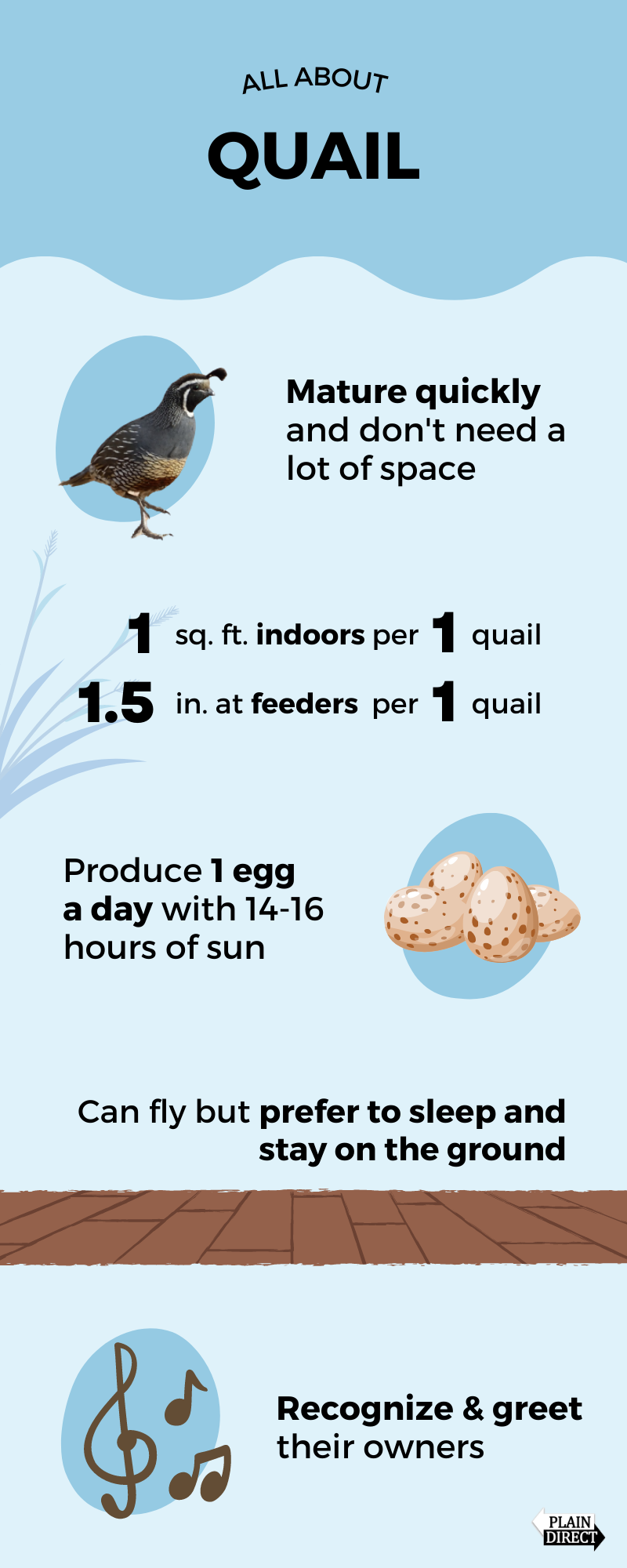
Quail shouldn’t be left to roam freely. They’ll get lost, disappear, and are highly prone to predator attacks because of their small size. It’s best to keep these birds indoors or in an enclosed area where they can’t get out and nothing can get in. Beware of rats as they will go after both the quail and their eggs. Make sure your quail have an enclosure and inside space that is not big enough for a rat to get through.
Furnishings
Quails prefer to be on ground level so high roosting perches aren’t necessary with these birds. However, because these birds enjoy sleeping on the ground, you’ll need to regularly clean their bedding and flooring to keep them clean and healthy. Similarly, indoor quail should have access to some sort of dust bath to promote good health and remain free of mites.
Food & Water
Each type of poultry has their own unique feeding needs. A generic poultry feed might not work depending on your breed. Learn how to feed your poultry properly.
Chickens
Chickens are foragers that hunt and eat insects, lizards, frogs, worms, slugs, mice, fruit, vegetables, and seeds. Your chickens’ protein needs will vary depending on their ages and if they’re being raised for eggs or meat. Chickens need access to grit to aid in eating, digestion, and quality egg production. Grit makes up for chickens’ lack of teeth, helping them to break down their food. It’s important to have grit available to your chickens at all times.
Guinea Fowl
Grown guineas get most of their nutrients from foraging bugs and vegetation but will need to be fed grit to aid in their digestion. These birds are great for controlling insect populations and scaring pests away with their loud behavior. They’ve even been known to eat mice, rats, crickets, grasshoppers, and ticks.
Turkeys
Turkeys need high-protein food that is specifically made for turkeys with enough protein to match how quickly they grow. This will be a starter feed they’ll eat from when they hatch to when they’re 6 weeks old. No other bird starter food should be fed to turkeys. Likewise, turkeys need drinking water that is at a cool temperature and is neither hot nor cold. Just like chickens, the protein percentage in your turkey’s food will change throughout its lifetime.
Quail
After hatching, give your baby quail a 30% protein starter feed. After they’ve reached 6 to 8 weeks old, switch them to a starter feed that is for game birds. If you are raising quail for meat, go with a grower feed or finisher feed and if you are raising quail for eggs, choose a developer feed or layer feed. Quail are foragers and will eat things like grains, insects, worms, seeds, berries, and nuts.
Ventilation
All indoor areas used for housing birds need to have proper ventilation for your own health and the health of your birds. Because bird manure has ammonia in it, the area needs to be properly ventilated to prevent respiratory infections. Symptoms of respiratory infection in birds include sneezing, snot, trouble breathing, and lethargy.
Indoor Lighting
Choosing red lighting for your poultry’s indoor space is significantly better than white light. Red light is best as it isn’t a fire hazard, won’t disrupt the birds’ sleep, and keeps birds from pecking each other. Because it hides the sight of injuries and blood, red lighting will prevent harm from attacks by other birds.
Egg Production
Chickens
You can expect 1 hen to lay 2 eggs around every 3 days. Hens lay the most eggs in their first few years, declining in egg production as they age. You don’t need a rooster to have egg-laying hens. In fact, many chicken owners choose to not have roosters as they can become aggressive with other chickens.
Eggs generally need to be collected one to two times a day from Spring to Fall. However, the amount of eggs laid is dependent on the amount of daily sunlight the hens get, how many hens you have, and how healthy the hens are. Hens do best when they get around 14 to 16 hours of sunlight a day and should get no less than 12 hours of sunlight. Every year hens go through a few months in the winter where they don’t get enough sunlight and don’t lay any eggs. This is a natural, yearly occurrence for chickens. Their egg-laying will return along with warmer, longer days.
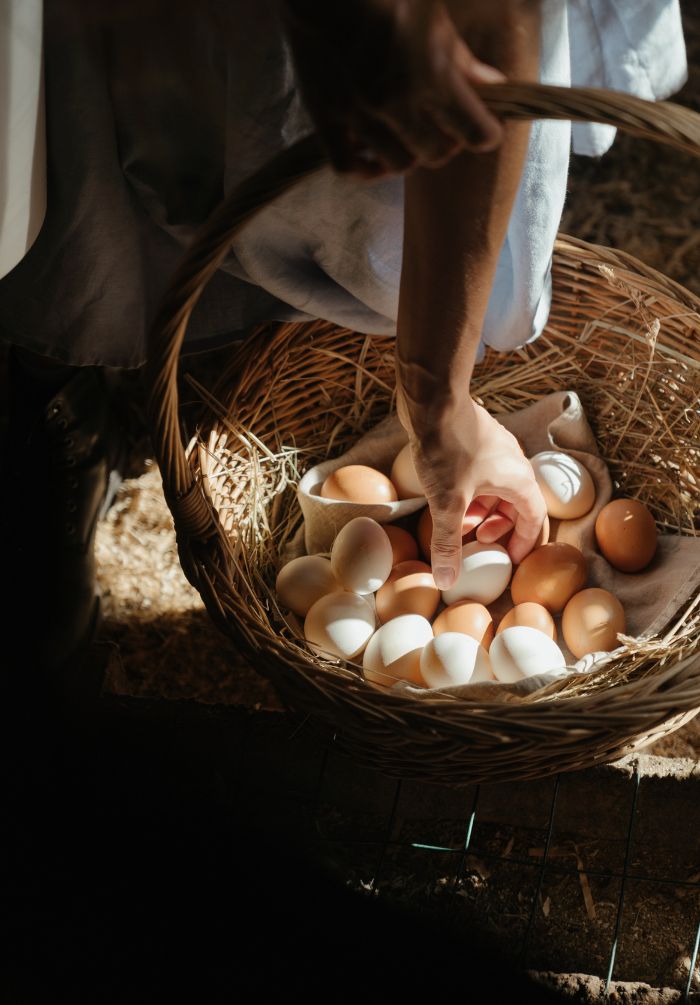
Guinea Fowl
Guinea fowl become adults when they are 1 year old. Adult guineas generally lay 1 egg a day, however, they only lay eggs seasonally when the weather is warm. While guinea eggs are not as big as chicken eggs, their eggshells are stronger.
Guinea hens aren’t picky about where they lay their eggs. Interestingly, these birds have such a group mentality that guinea hens generally lay their eggs in the same spot. While you may need to search a bit more to find where their eggs are, once you find the spot they chose you’ll have found most of the eggs.
Turkeys
While we usually think of turkeys as being raised for meat, these birds lay eggs as well. Turkey eggs are significantly larger than the eggs of other birds, but their level of egg production is much lower. Turkeys begin laying eggs during the spring season and, compared to birds that lay 1 egg a day or many in a week, turkeys generally lay around 3 eggs a week. Turkey eggs, which taste similar to chicken eggs, are completely safe for people to eat.
Turkeys wait until they’ve laid 10 eggs before they will sit on their nests and eggs. After at least 10 eggs have been laid and the turkey is ready to sit on her nest, it’ll be another 28 weeks before those eggs are ready to hatch.
Quail
In line with their short lifespan of 1 to 3 years, quail produce fewer eggs when they reach 9 months old. However, when a quail is between 2 to 8 months old, you can generally expect to get 1 egg a day. Your quail will need around 14 to 16 hours of sunlight every day to keep its egg production and health up. Quails are less selective than chickens about where they lay their eggs. Some may use a nesting box but ultimately they’ll choose when and where they’ll lay their eggs.
Quail eggs are smaller than chicken eggs but, because they mature fast, start laying eggs before chickens. However, like chickens, you don’t need to have a male quail for your female quail to lay eggs.
Predators
Poultry enclosures should be protected on all sides to keep predators from swooping in or digging under the enclosure. Hawks, eagles, and owls are all predator birds that go after poultry, so make sure the top of your birds’ enclosures are completely enclosed. Likewise, predators on land like foxes, dogs, cats, coyotes, raccoons, and other animals shouldn’t be able to get inside your poultry enclosure and coop. One great way to prevent predators from reaching in or digging their way into your bird enclosure is by burying and installing hardware cloth.
Health
Chickens
Chickens like to have dust baths where they dig and roll around in earthy materials to keep their feathers healthy and free of pests. Like other birds, chickens are highly susceptible to parasites, mites, and lice. These pests create great internal and external discomfort for your chickens. While chickens can be resilient against poultry diseases that affect other birds, they are still highly susceptible to many diseases that they need to be protected against.
Guinea Fowl
Guinea fowl are generally very healthy and unlikely to carry diseases like other poultry. However, these birds have fragile legs. Guineas shouldn’t be grabbed by their legs. In their attempts to escape they can easily hurt themselves by breaking bones. Instead of grabbing them by the legs, you should catch a guinea by placing your hands around its middle and holding down its wings. Be gentle but also hold tight to avoid them breaking free and flying away.
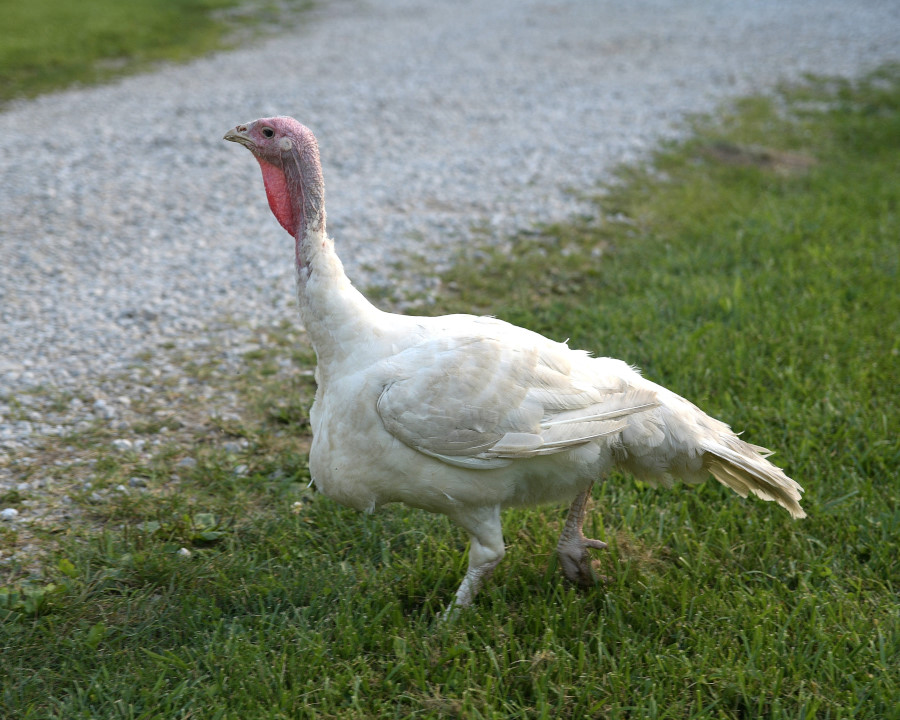
Turkeys
It’s important to keep your chickens and turkeys separate to avoid the spread of blackhead. Blackhead is a disease that is deadly for turkeys but not as serious for chickens. Because this disease can be difficult to spot right away, your chickens may be carrying it unknown to you and pass it along to your turkeys.
Quail
Owners should be aware of quail disease and watch out for the signs. Also known as ulcerative enteritis, this is a deadly disease that causes anemia and injures the intestines. Quail disease can be easily spread among quail because it is passed through quail manure. Signs of this disease include lethargy, drooping wings, and diarrhea. While your quail can pass this along to chickens, chickens are more resilient against this disease.
Like other birds, quail are susceptible to mites, lice, and parasites. Signs your quail may have parasites include diarrhea, increased appetite, a decrease in laying eggs, worms in their manure, and worms in their eggs. Similarly, loss of feathers and frequent scratching are signs your quail may have mites. Dust baths prevent quail from getting mites and keep their feathers healthy. In order to prevent the spread of disease, quail shouldn’t be housed or free to roam with chickens and other birds.
Hatching
Chickens
When you start with chicks, they will need a draft-free area to live in that is kept warm with a brooder lamp (ideally around 92 degrees Fahrenheit.) As chicks grow and get more feathers, you can start decreasing the inside temperature by 5 degrees Fahrenheit every week, stopping when they turn 6 weeks old. During this same time, baby chicks will need to be fed chick starter food until they reach 6 weeks.
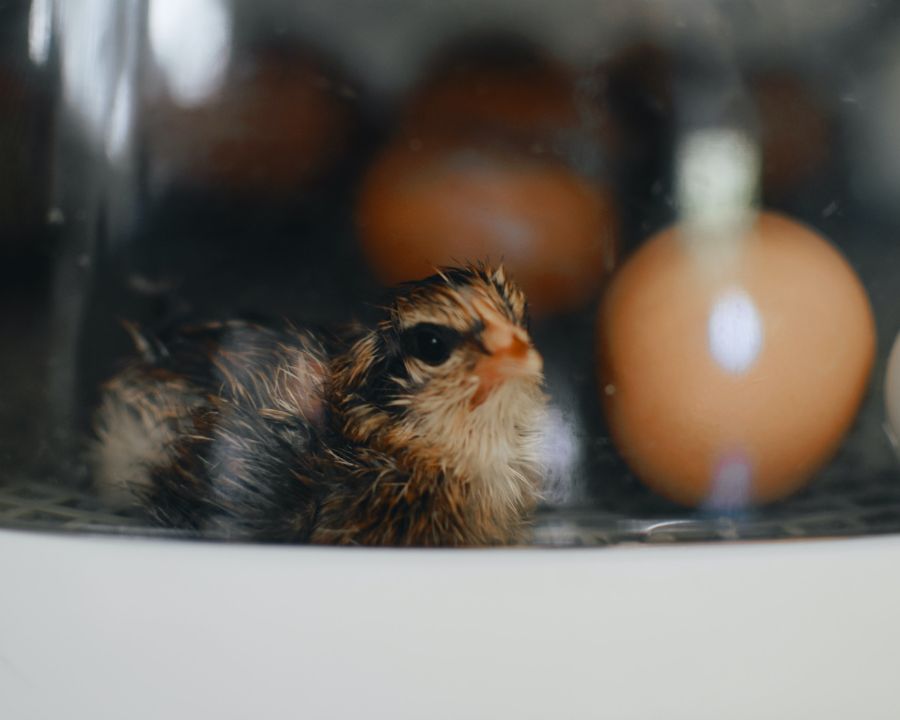
Guinea Fowl
Guinea eggs generally hatch after 26 to 28 days. It’s advised to use a broody chicken or incubator for hatching guinea fowl eggs as guinea hens can accidentally injure or kill their newly hatched guinea babies, also called keets, by wandering too far for them to follow. Keep newly hatched guineas safe by housing them in an inescapable, large indoor area for their first 2 weeks of life.
At 3 weeks old, keets can be moved to a space that is no less than 1 square foot per bird. Once they reach 1 month, keets will start growing feathers. Generally, once you notice gray feathers growing, your keets will be ready to enter the world.
Turkeys
For their first 10 days alive, baby turkeys, also called poults, aren’t able to regulate their body temperature so it’s important to make sure drafts are blocked from entering their brooder. Their brooder should be 95 degrees Fahrenheit for the poults’ first week of life and reduced by 5 degrees Fahrenheit each week until their feathers start growing around 6 to 8 weeks old.
Turkeys should be kept in a poult brooder until they are around 6 weeks old and should be raised away from other birds when they are young. Poults are especially fragile and can succumb to anything from slight changes in weather to not fleeing danger.
You can help your poults acclimate to their new environment by gently placing their beaks in their water dish. However, be aware that poults can easily drown. This can be avoided by placing marbles in their water dishes, which can also help your poults drink more water as they’ll be drawn to the marbles and peck at them.
Quail
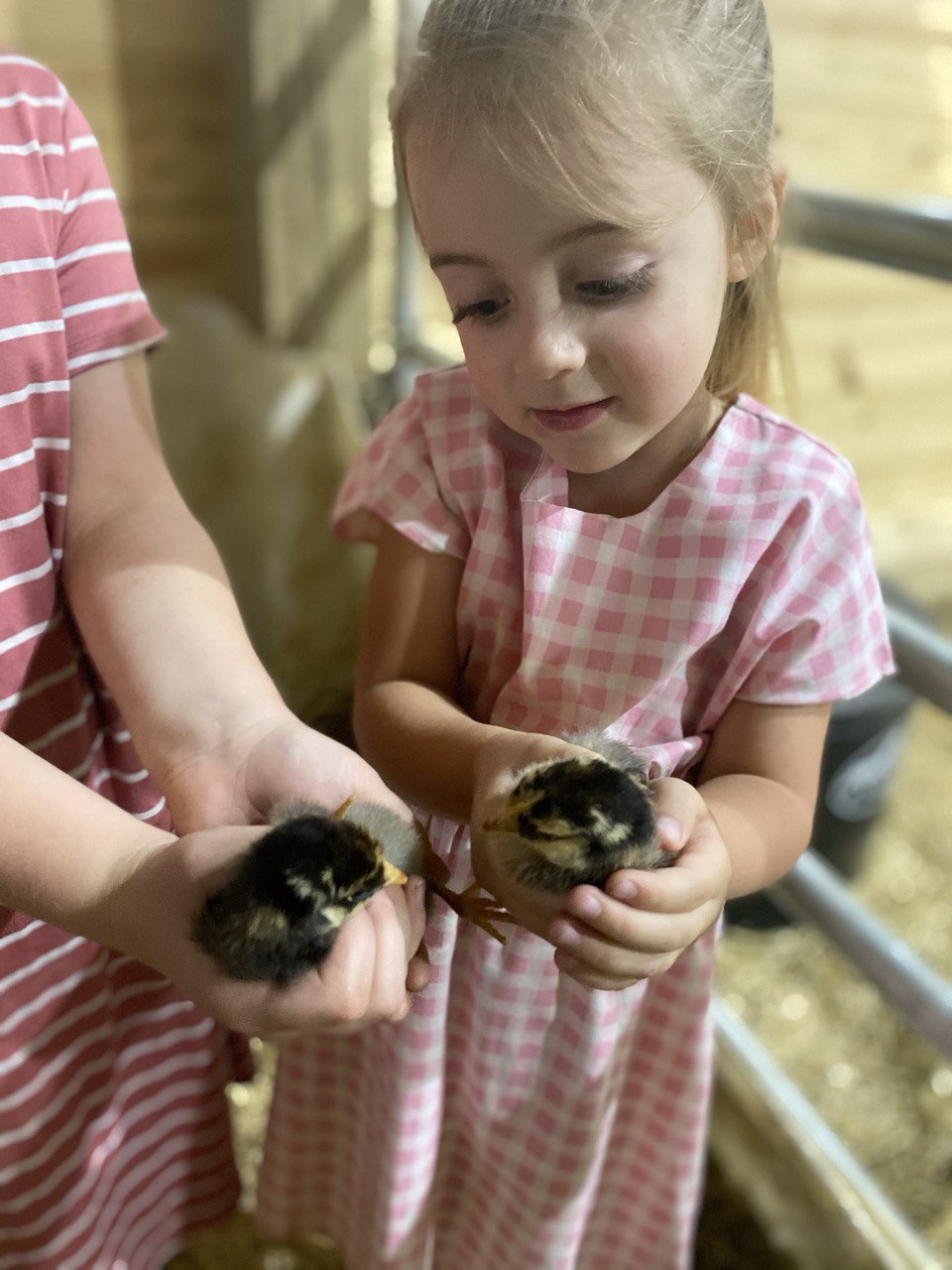
Don’t expect your female quail to mother its offspring. Quail aren’t broody birds so an incubator is required for egg hatching. In an incubator that’s kept at 99.5 to 100.5 degrees Fahrenheit, quail generally take about 18 days to hatch but this can change depending on the breed. Up until the quail are 2 weeks old, you’ll need to reduce the temperature of your incubator by 5 degrees Fahrenheit.
Quail chicks will need high-protein feed to keep them growing and healthy. It’s also a good idea to give their food and water bins small openings to keep them clean and free of bird droppings. It’s advised to keep your baby quail away from adult male quail as they can become aggressive with the babies. Once the baby quail have grown to a size that is similar to the size of an adult male quail, usually around 7 to 8 weeks, they should be okay to live together.
Purchase Poultry Online
Purchasing poultry online is an easy way to start or add to your homestead. On Plain Direct, you can purchase birds of all ages and for all purposes. Get started today by creating an account and browsing poultry listings near you.
Share:
Tags:
No tags yet.